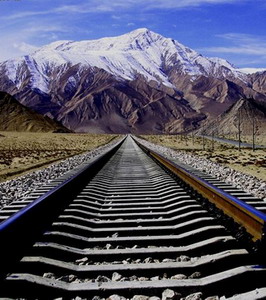Service and Facilities

-
Name:Qinghai-Tibet Railway
-
Route :Xining to Lhasa
-
Length :1956 km (1215 mile)
-
Overview:Construction of the 815 km (506 mi) section between Xining and Golmud was completed by 1984. The 1142 km (709 mi) section between Golmud and Lhasa was completed bywas completed on 12 October 2005.
Overview
Train travel in China has to be undertaken with the full knowledge that the system is designed for the local population who are familiar with the standard conditions. English is generally not spoken by any of the staff on the trains or in the railway stations. Limited English signage is available in the railway stations.
Boarding the train
A separate waiting lounge is available in the railway stations for passengers traveling in the soft sleeper section. Preferential boarding is available for those passengers.
Baggage space is limited and must be storred in your compartment so it is wise to travel with small baggage rather than large suitcases.
Most train stations have a considerable number of stairs to climb to reach the platforms. Bags have to be carried up and down these stairs. Most stairs have a steep ramp so that wheeled bags can be dragged up as you walk up the stairs.
Cabins
3 different cabins available for Qinghai-Tibet Trains:
Hard Seat: Hard Seat is used by a large percentage of the population as it is probably the cheapest way to travel in China. Sitting only carriages, they are usually crowded and often more tickets are sold than there are seat available. In weekend and holidays, many people stand for hours on the journey, and it will be terribly crowded for Chinese New Year Holidays.
Hard Sleeper: There are six narrow bunks to a compartment that has no door so there is no privacy. They are usually very noisy and with a squat toilet at each end of the carriage. The condition of the toilet will get progressively worse as the journey progresses. Food trolleys pass back and forth along the train so it is possible to eat quite cheaply. A blanket and small pillow are supplied with each bunk.
Soft Sleeper: There are four bunks in a compartment which has a door for privacy. Each bunk will have a blanket and pillow. Toilets are at the end of the carriage and may be a western toilet however they may not always be clean as they are used by people from other carriages. No toilet paper is provided in the bathrooms.
Foood service the train
Food cart goes between cabin to cablin every 30 minute, sells little fruit, snacks, and “lunch box” meals for dinner and breakfast you can eat in your cabin. The lunch box are Chinese style food, rice and pork meat. In the hard sleeper and hard seat cabin, many people take instant noodle soups for dinner.
Car #9 is the dining car with a little bar area. Recommend you to have dinner there and the food is very good but quite expensive. At least the dining car looks clean. However, it was crowded and you have to share your table with other people, also, they ran out of several dishes early. They serve dinner from boarding until 9:30pm when "midnight snack" time starts. The breakfast starts at 7am.
Train Ticket Reservation
The system for train ticket reservations in China will only allow Travel Agencies including China Discover to confirm bookings 10 days prior to departure of the Tibet-Qinghai train.
It takes 48 hours for the train travelling from Beijing to Lhasa, if you buy a Beijing/Lhasa train ticket in Beijing, the train ticket is more expensive than Beijing/Lhasa flight.
That is why we always recommend our clients to fly to Lhasa, take 36 hours Lhasa/Xian train instead. The T28 train departs at 08h00 from Lhasa, arrive at 20h22 in Xian on the next day. You only need to stay one night on the train.
We only provide train ticket booking service for our clients who buy our hotel+tour packages. We do not offer "buy train ticket only" service.



